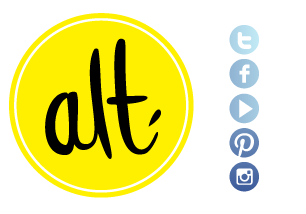Setting and Styling a DIY Project

Simple styling will always lead to a successful project! Unless you are a trained stylist, focus your DIY styling to be simple, basic, and bold.
Use a clean and clear backdrop. Since most of us do not have a studio, here is a quick way to create such a backdrop.
- Purchase the largest white plywood board you can find from your local hardware store (ours is 6 feet x 10 feet and cost us $20).
- Rest it against a wall, or cut the board and hang it for a more visually appealing everyday approach.
- If you can manage it, buy more than one board. You can use one on the wall and another on the floor.
- Another option is finding a well-lit wall in your home and painting it white.
For adding backdrop interest, wrapping paper is my go to resource. It is easy to hang, and unlike cloth, doesn't have wrinkles to iron out. Just be sure to check the sheen on the paper. If the reflection is too bright, it will overwhelm what you are shooting. Stick to basic designs or plain-colored textured paper. You want to ensure your main focus is always the project at hand, and not the pattern in the backdrop.
Consider shooting some projects away from your home base. Head around town scoping out interesting walls, or great looking fields to incorporate into your shoots. This variation will help readers see the full potential of your project.
Use props whenever you can. Props can really add a human touch to your DIY projects: a linen napkin under a plate; a pretty cup of coffee to go with a journal cover; people to wear your party hats, or sit at your table. Introducing everyday life into your photos will help readers connect with the project.
To begin propping a DIY photo, think about what’s in style this season and don't forget the classic combos. Get DIY inspiration from your favorite fashion and design sources, and translate the inspiration to the project you are working on. Invest in nice tools to be seen in your photos. You can find great vintage selections on Ebay, in thrift stores, and even your local garden shop.
Lastly, never forget that photography is the main thing. Only take photos with a professional camera. I use a 55mm lens to shoot most of my DIY projects. It is a great starter lens because it is cheap (under $80). It is able to capture a lot of detail and has a low aperture, which allows for a good project focus and a nice blurred backdrop. As you get more comfortable shooting (and save up money), the more expensive macro 100mm lens will give you even more detailed shots for intricate projects.
Post by Victoria Hudgins. Photo by Flying Fig Photography.



 Aug 22, 2012
Aug 22, 2012
Reader Comments (3)
Great tips, Victoria! I currently use a 50mm 1.8 for all of my blog photos, which typically feature DIY tutorials with paper products. I would like to purchase another lens, but I'm not sure which to go for - a macro lens or a wide angle one (Sigma 30mm 1.4) The wide angle is appealing since I always find myself standing on a chair or across the room in order to get larger projects into one shot. Any thoughts?
Thankies:-)
Ambe, how about buying both:) I would actually go for the wide angle first (only because it is about 1/2 the price) and then save your pennies for a really good macro.
I've just recently bought my 1st DSLR am an having such fun learning all the settings and finding ways to compose products for shoots. I'd never of thought of wrapping paper as a backdrop! As a stationery-addict, I now have a great excuse to go buy more!